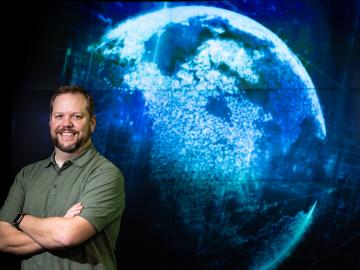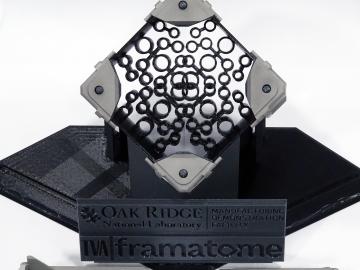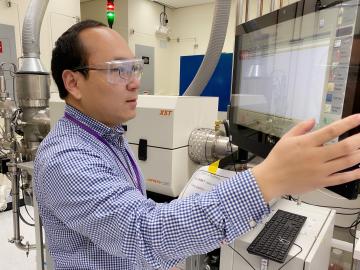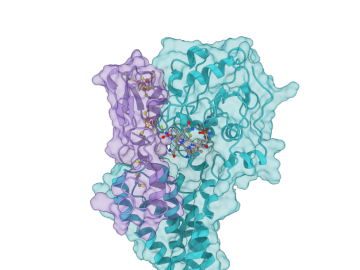
Filter News
Area of Research
- (-) Biology and Environment (61)
- (-) Energy Science (26)
- (-) Materials (29)
- (-) Nuclear Science and Technology (8)
- Advanced Manufacturing (2)
- Computational Biology (1)
- Computer Science (2)
- Fusion and Fission (7)
- Materials for Computing (5)
- National Security (13)
- Neutron Science (58)
- Quantum information Science (2)
- Supercomputing (65)
News Type
News Topics
- (-) Advanced Reactors (6)
- (-) Biology (46)
- (-) Computer Science (22)
- (-) Frontier (3)
- (-) Molten Salt (1)
- (-) Neutron Science (12)
- (-) Physics (12)
- (-) Polymers (5)
- 3-D Printing/Advanced Manufacturing (26)
- Artificial Intelligence (9)
- Big Data (8)
- Bioenergy (37)
- Biomedical (12)
- Biotechnology (8)
- Buildings (11)
- Chemical Sciences (12)
- Clean Water (13)
- Composites (4)
- Coronavirus (11)
- Cybersecurity (6)
- Energy Storage (23)
- Environment (77)
- Exascale Computing (5)
- Fossil Energy (1)
- Fusion (8)
- Grid (13)
- High-Performance Computing (13)
- Hydropower (6)
- Isotopes (7)
- Machine Learning (6)
- Materials (25)
- Materials Science (22)
- Mathematics (4)
- Mercury (7)
- Microelectronics (1)
- Microscopy (15)
- Nanotechnology (11)
- National Security (3)
- Nuclear Energy (24)
- Partnerships (6)
- Quantum Computing (1)
- Quantum Science (1)
- Security (4)
- Simulation (9)
- Space Exploration (3)
- Summit (8)
- Transportation (19)
Media Contacts

Cory Stuart of ORNL applies his expertise as a systems engineer to ensure the secure and timely transfer of millions of measurements of Earth’s atmosphere, fueling science around the world.

The ExOne Company, the global leader in industrial sand and metal 3D printers using binder jetting technology, announced it has reached a commercial license agreement with Oak Ridge National Laboratory to 3D print parts in aluminum-infiltrated boron carbide.

Marcel Demarteau is director of the Physics Division at the Department of Energy’s Oak Ridge National Laboratory. For topics from nuclear structure to astrophysics, he shapes ORNL’s physics research agenda.

As ORNL’s fuel properties technical lead for the U.S. Department of Energy’s Co-Optimization of Fuel and Engines, or Co-Optima, initiative, Jim Szybist has been on a quest for the past few years to identify the most significant indicators for predicting how a fuel will perform in engines designed for light-duty vehicles such as passenger cars and pickup trucks.

From soda bottles to car bumpers to piping, electronics, and packaging, plastics have become a ubiquitous part of our lives.

The Transformational Challenge Reactor, or TCR, a microreactor built using 3D printing and other new advanced technologies, could be operational by 2024.

Popular wisdom holds tall, fast-growing trees are best for biomass, but new research by two U.S. Department of Energy national laboratories reveals that is only part of the equation.

About 60 years ago, scientists discovered that a certain rare earth metal-hydrogen mixture, yttrium, could be the ideal moderator to go inside small, gas-cooled nuclear reactors.

It’s a new type of nuclear reactor core. And the materials that will make it up are novel — products of Oak Ridge National Laboratory’s advanced materials and manufacturing technologies.

A team led by ORNL created a computational model of the proteins responsible for the transformation of mercury to toxic methylmercury, marking a step forward in understanding how the reaction occurs and how mercury cycles through the environment.


